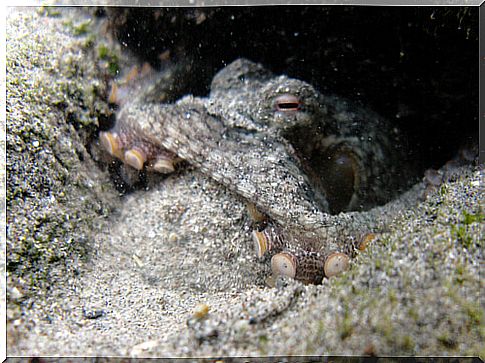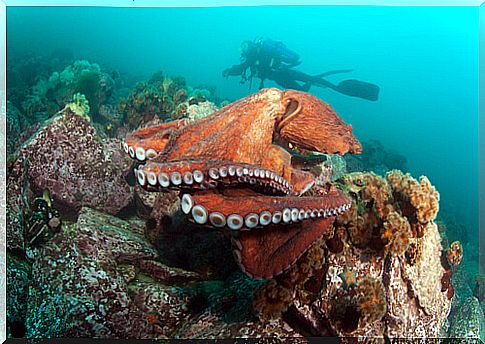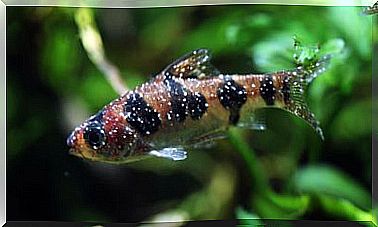4 Species Of Octopus That Inhabit The Seas

Octopods are marine animals with eight arms, which do not have a shell and feed on fish and crustaceans as well as plants. In this article we will tell you about some of the octopus species that live in the depths of the oceans.
How many species of octopus are there?
In total there are more than 300 species of octopus and all of them live in salty waters, both hot and cold. They differ from each other by their sizes and colors; some of them are:
1. Blue-ringed octopus
As its name suggests, the blue-ringed octopus –the photo that opens this article– has a light body with blue circular ‘spots’ that can even change their tone, depending on how they want to blend in with the environment.
With a fairly small size, not exceeding 20 centimeters, this octopod moves very fast when it goes out in search of prey and if it feels cornered by a predator, it releases a kind of toxic ‘ink’ to be able to escape in a couple of seconds.
The blue-ringed octopus is one of the most aggressive and territorial species that exist. It can fight other conspecifics for food, shelter, or territory. It is even dangerous for humans, since its bite can kill us.
2. California two-spotted octopus
With its name we can already know two characteristics of its species: that it has two spots on its body and that it lives in Californian waters, although it can also be found in Japan, Mexico and Africa. The markings are blue and are located around the eyes, while the rest are usually grayish.

The California two-spotted octopus measures about 40 centimeters, of which almost 25 belong to its arms. It is said that it is one of the most ‘friendly’ species because they do not usually attack and tolerate their ‘relatives’ without problems, except when they compete for food, consisting of crustaceans, mollusks and small fish.
3. Common octopus
Its scientific name is Octopus vulgaris and it is one of the largest in existence: it can measure 90 centimeters and weigh nine kilos. With a large head and huge eyes – somewhat disproportionate to the rest of the body – it can change color to blend in with the environment in which it lives.

The common octopus is found in all oceans; both in temperate and tropical areas, although it is more common in the Mediterranean Sea, the Canary Islands, the English coast, the Cape Verde Islands and certain areas of Africa.
Its life is quite short – no more than two years – and it dies shortly after mating ; the female can lay 200,000 eggs and avoid by all means that they are eaten by predators. It can even spend 40 days next to the young and eat part of their arm to regain energy.
4. Giant Pacific Octopus
Among the known octopus species, this is the largest: specimens up to nine meters long have been seen. It has the ability to change color and camouflage itself among corals, plants, and rocks. It lives longer than any other octopod – about four years – and is said to be the most intelligent invertebrate: it has been able to get out of labyrinths and open jars.

It lives in the temperate waters of the Pacific Ocean, from southern California to Alaska, and also in Japan. It hunts at night and feeds on fish, lobsters, crabs, clams, and shrimp. It reproduces in summer: the male transfers the sperm to the female and the female is responsible for laying up to 100,000 eggs in the shallower waters.









